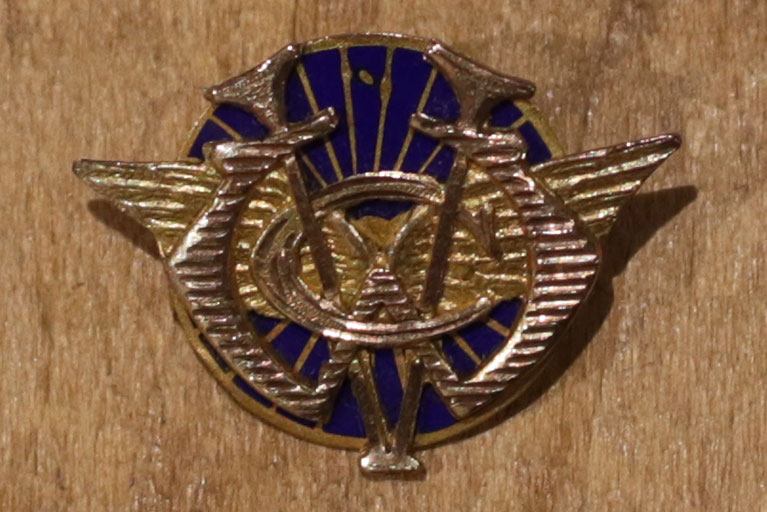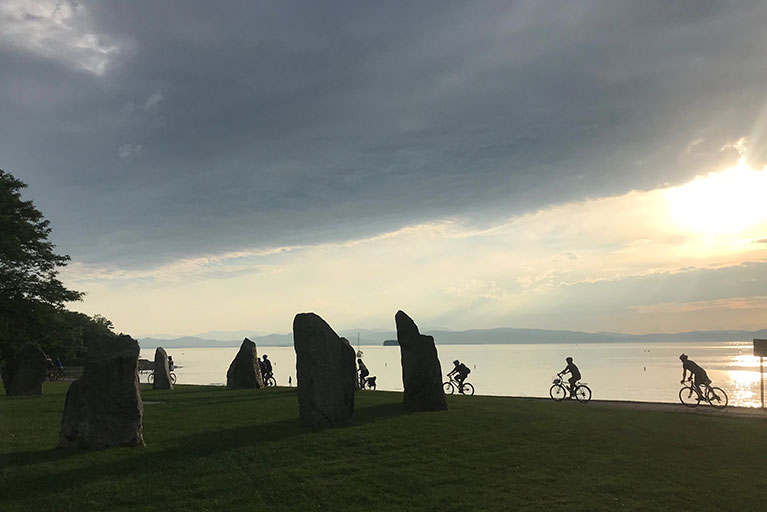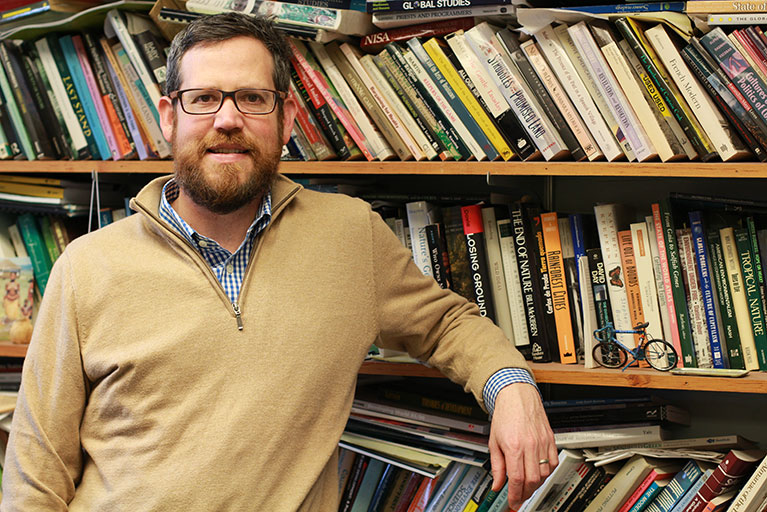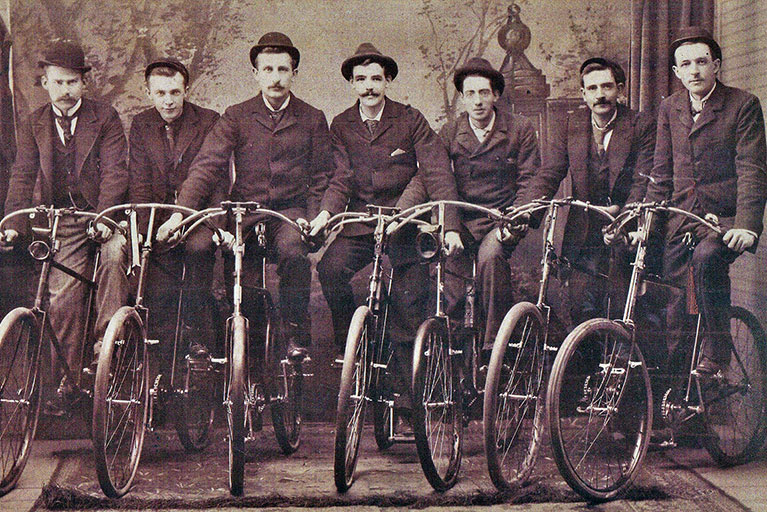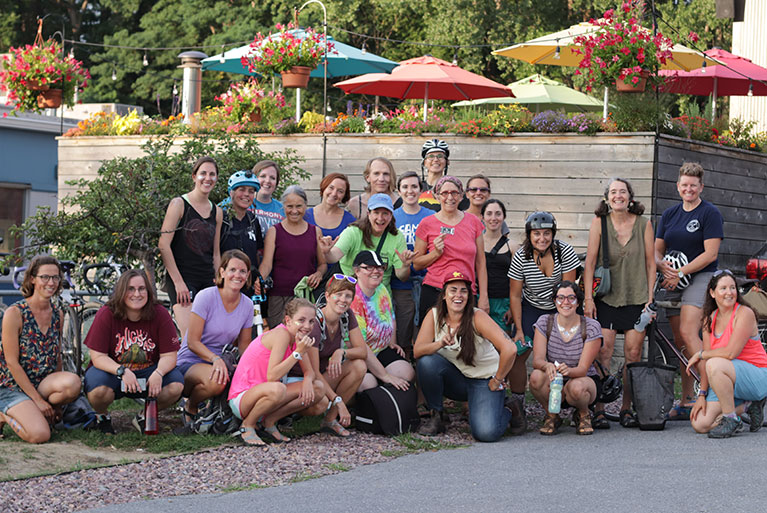Mobility for the Masses
Many Vermonters felt a sense of liberation during the nation’s first “bike boom” in the 1890s, when bikes became cheaper and easier to ride. Although the state’s early bike clubs were the province of elites, underrepresented groups soon took up the new technology.
This Episode’s Featured Object:
Vermont Wheel Club Pin
Mary Labate Rogstad: [The article describes] the “caliber” of young men they have welcomed into the club: “including nearly all of the leading young men of the place, and several businessmen, and elements of high social success…”
Ryan Newswanger: Wow. So they were looking for a certain type of person.
Mary: They were looking for a certain type of person.
Images: Members of the Queen City Bicycle Club cycling through Oakledge Park on their August ride. Photo by Joy Snow.
UVM Anthropology professor Luis Vivanco, the author of Reconsidering the Bicycle: An Anthropological Perspective on a New (Old) Thing.
A bicycle club in Swanton, VT, 1893. Image courtesy of the Swanton Historical Society.
(Bottom) The Queen City Bicycle Club after their ride. Christine Hill is at the center of the photo, in the red hat, giving the peace sign.
Riding a Penny Farthing
Penny farthings, or “ordinary” bikes, were popular in the 1870s and 1880s. These had an enormous front wheel, and a small back wheel. When someone says, “old-fashioned bicycle,” you probably picture a penny farthing.
Just getting up on the seat was a challenge. Glenn Eames took a penny farthing onto the street in the Old North End to show us how it’s done.
Episode Transcript
Christine Hill [At start of Queen City Bicycle Club ride]: Hello…I’m Christine. Thanks for coming to Queen City Bicycle Club this month. The idea is that we get together—women, trans, femme cyclists—we ride around with this boom box. It’s a pretty low-key ride, we’re not going to wear anyone out tonight.
Christine Hill leads group rides for the Queen City Bicycle Club.
Christine: The name Queen City Bicycle Club came from Luis. Because part of his presentation about bicycle history in Burlington was talking about bicycling clubs in the early 1900s.
Christine Hill: And one of those clubs was called Queen City Bicycle Club. And there’s a photo of all the club men lined up outside of Fletcher Free Library.
Luis Vivanco: Elite men were the first to take up bicycles.
Luis Vivanco is an anthropology professor at UVM, and the author of “Reconsidering the Bicycle: An Anthropological Perspective on a New (Old) Thing.”
Luis: Wealthy men who could afford these expensive machines who wanted to appear very modern. Because the physical training and control over, especially early on, these high-wheeled bicycles, was quite substantial, and so one of the ways you could show your distinctions, your social and physical distinction, was to master one of these “wheels.” And who has time and money to do it? It’s wealthy men.
Episode Credits
Before Your Time is presented by the Vermont Historical Society, the Vermont Humanities Council, and VTDigger. This episode was produced by Ryan Newswanger and Mike Dougherty, with help from Mary Labate Rogstad. Thanks to our guests, Christine Hill, Luis Vivanco, and Glenn Eames. Also thanks to Zack and Tom at the Old Spokes Home Community Workshop.
Glenn asked us to mention that he’s seeking a venue where he can display the 75 antique bikes in his collection — if you have any ideas, get in touch.
Music by Michael Chapman and the Woodpiles, Blue Dot Sessions, Joe Bagale, Kevin MacLeod, and Bad Snacks.
